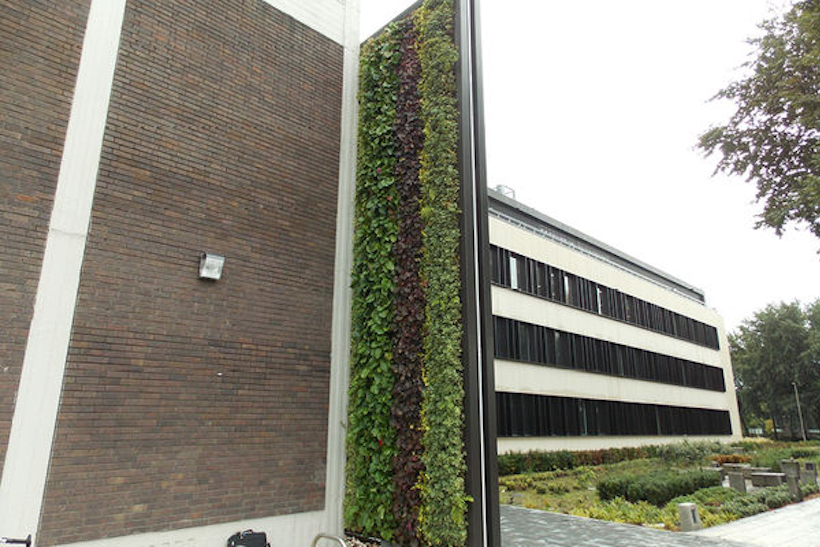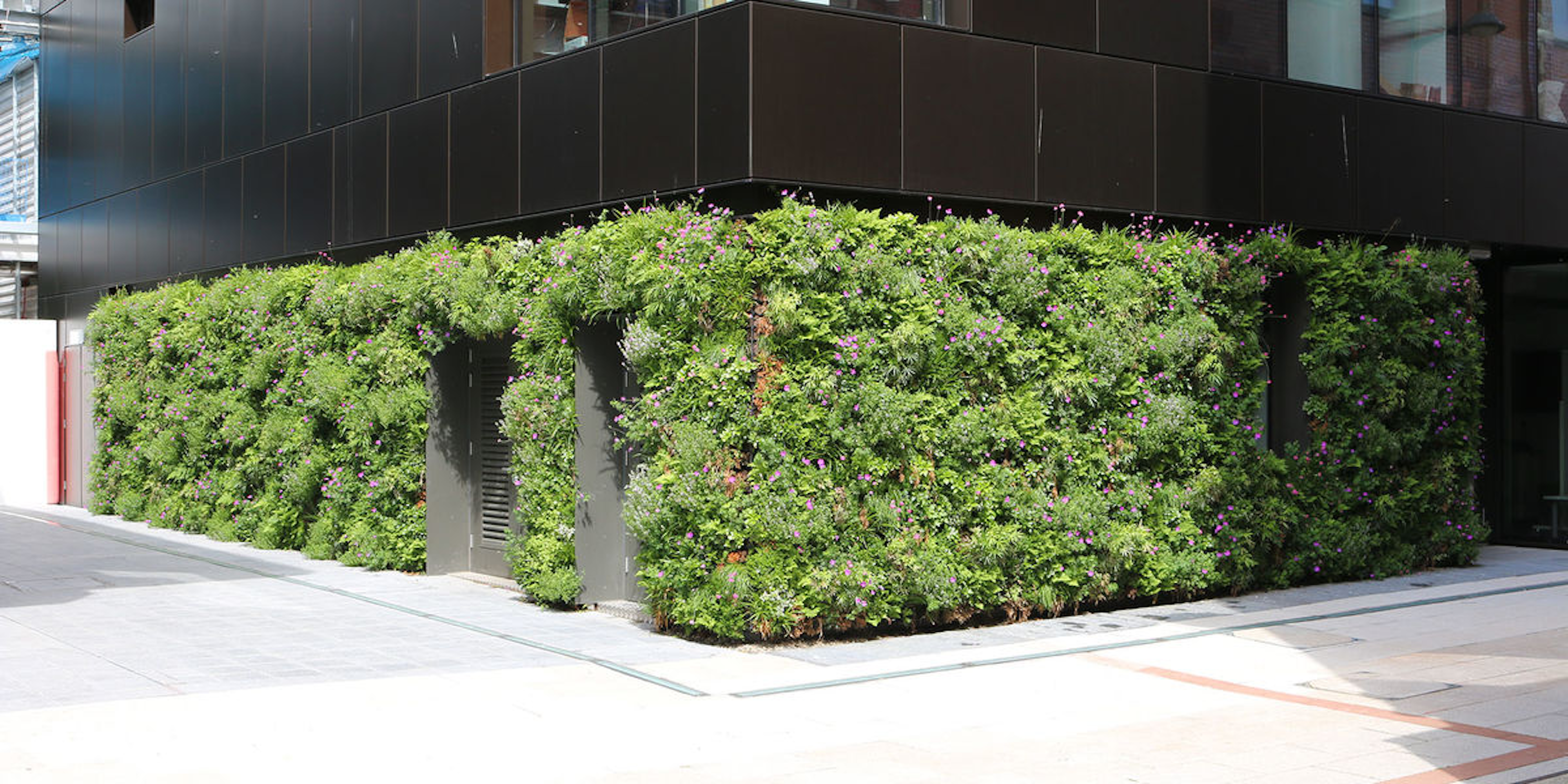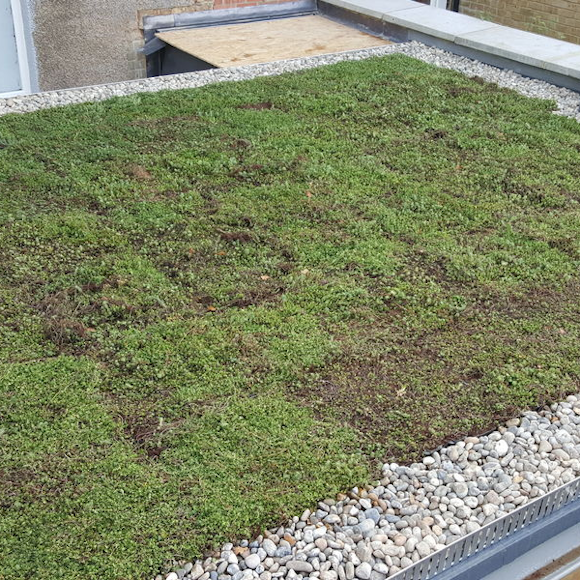Living Walls are fast gaining popularity amongst leading edge designers who want to incorporate striking green walls of vegetation that inject a splash of colour, or create a calming and serene backdrop.
Living Walls a potted history
Historically Living Walls have been around for the best part of 80 years. Stanley Hart White a professor of Landscape Architecture at the University of Illinois took out the first patent for green walls in the 1930s for a Vegetation-Bearing Architectonic Structure and System “for producing an architectonic structure of any buildable size, shape or height, whose visible or exposed surfaces may present a permanently growing covering of vegetation.”
Whilst the wording may be a little on the dry side the actual results are far from dry! Vertical gardens such as the ones that Viritopia design and manufacture, have an almost limitless range of planting options and configurations – meaning that it’s possible to install a green wall almost anywhere in a building to create a variety of pleasing design features.
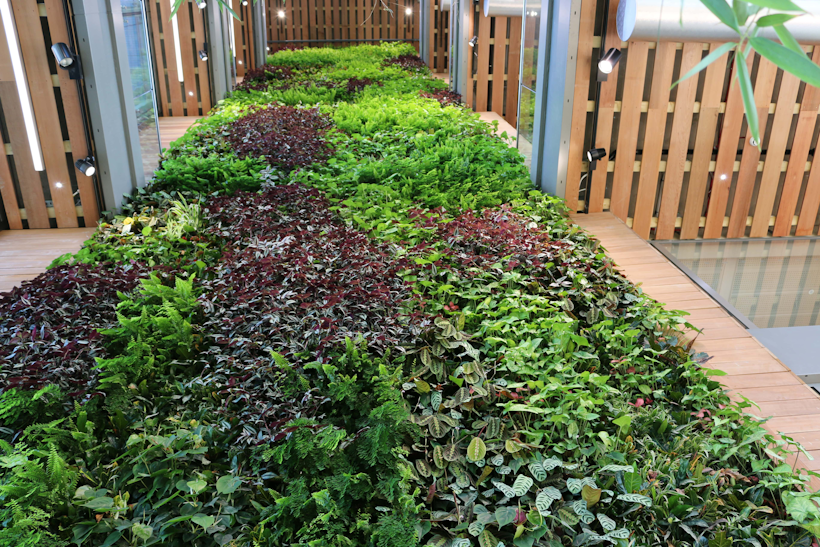
Key design features of vertical gardens
Divides and defines living spaces
Transforms apartment block landings and corridors
Creates indoor all season colour
Dramatic addition to modern interior design
Relaxing visual feature in any room
Increases property value and saleability
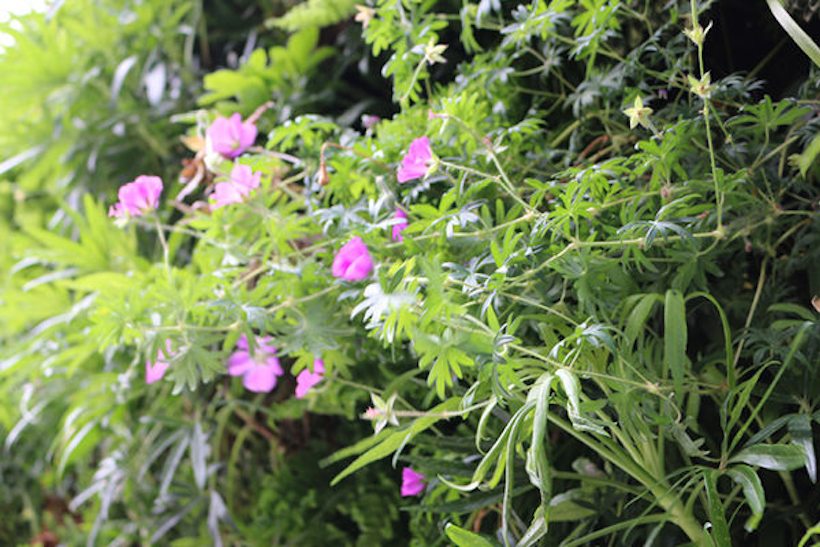
No plumbing and easy maintenance
A lush, striped vertical panel brings the University of Liverpool campus to life.
Living Walls for many architects, designers and building owners, a key concern is the amount of time that might be required to maintain a living wall. We know from experience that actually maintaining a living wall is incredibly easy – requiring only minimal effort thanks to our patented systems that require no plumbing and very little maintenance. At Viritopia we will advise you on the range of plants you could incorporate in a vertical garden based on your design needs and provide the support to design, build, set up and maintain the walls.
The Health Benefits of Green Walls to an interior
Not only do living walls look beautiful, but also the benefits of vertical gardens are now widely recognised – especially to our health. Air quality inside a building suffers greatly due to emissions from computers, printers, paint, furniture, as well as insufficient air conditioning and ventilation. The plants used in living walls counteract this by regulating humidity, removing Carbon Dioxide, formaldehyde, VOCs, Carbon Monoxide and many other harmful particulate pollutants. NASA (The National Aeronautic and Space Administration) has identified the 15 best plants for living walls.
The emotional benefits of using plants indoors are also better understood and research has shown that interior plants can elevate mood, reduce stress, and enhance productivity in the workplace.
So using vertical gardens and green walls offers benefits beyond the aesthetic. They are healthy as well as beautiful, but don’t take our word, take a look at our extensive gallery of living walls and find out for yourself!
